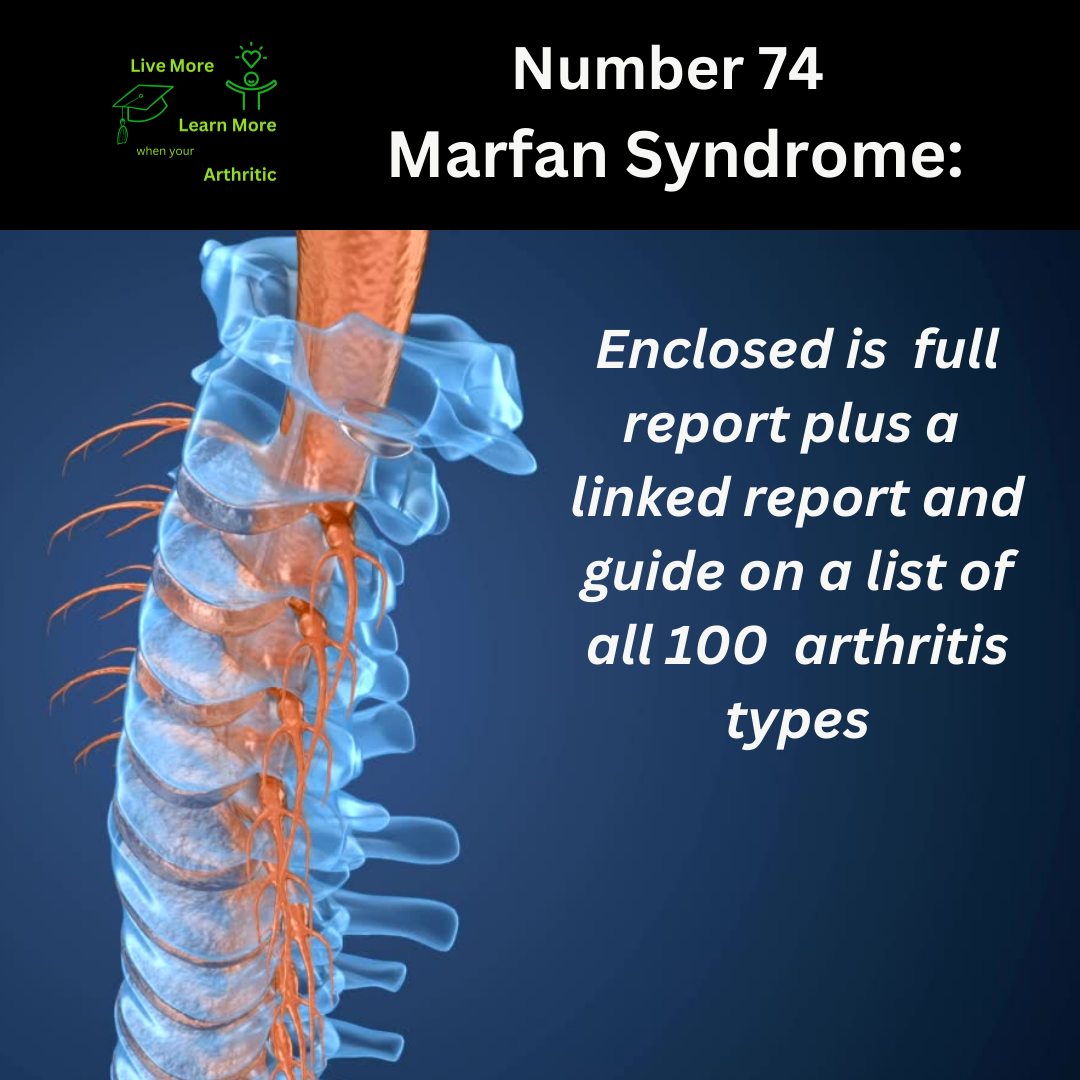
Marfan Syndrome: Number 74 on the list of 100 types of Arthritis
Marfan syndrome is a genetic disorder that affects the body’s connective tissue, impacting various organs and systems. It is caused by mutations in the FBN1 gene, which provides instructions for making a protein called fibrillin-1. This protein plays a crucial role in providing strength and flexibility to connective tissues throughout the body.
 Description of Marfan Syndrome
Description of Marfan Syndrome
Marfan syndrome is characterized by abnormalities in connective tissue, affecting the skeleton, eyes, heart, and blood vessels. Individuals with Marfan syndrome often have long limbs, flexible joints, and a tall stature. The condition can vary widely in its severity, with some individuals experiencing mild symptoms while others have more significant complications.
Causes and Triggers
Marfan syndrome is primarily caused by genetic mutations, typically inherited from a parent who carries the affected gene. In some cases, the condition can also occur due to spontaneous mutations. The FBN1 gene mutation disrupts the production of fibrillin-1, leading to abnormal connective tissue formation.
Symptoms and Limited Range of Motion
Common symptoms of Marfan syndrome include:
- Tall and slender physique
- Long arms, legs, and fingers
- Hypermobile joints (joints that can move beyond the normal range of motion)
- Chest deformities, such as pectus excavatum (sunken chest) or pectus carinatum (protruding chest)
- Eye problems, including nearsightedness (myopia), lens dislocation, or retinal detachment
- Heart abnormalities, such as aortic enlargement (aortic dilation) and valve disorders
The limited range of motion in Marfan syndrome is primarily due to joint laxity (looseness), which can lead to joint instability and increased risk of dislocations.
Onset and Demographics
Marfan syndrome can affect individuals of any age, but symptoms typically become noticeable during childhood or adolescence. The condition affects men and women equally, with no significant gender preference.
Lifespan Impact and Prognosis
The lifespan of individuals with Marfan syndrome can vary depending on the severity of symptoms and associated complications, particularly those related to the cardiovascular system. With proper management and medical care, many individuals with Marfan syndrome can live a full and productive life. However, cardiovascular complications such as aortic dissection can be life-threatening if not promptly treated.
Quality of Life and Proactive Approaches
Proactive management of Marfan syndrome involves regular medical monitoring, including cardiovascular assessments to detect and manage aortic enlargement. Orthopedic interventions may be necessary to address joint problems and prevent complications like scoliosis or joint dislocations. Physical therapy can help improve joint stability and flexibility.
Complications and Associated Conditions
Complications of Marfan syndrome primarily involve the cardiovascular system, including aortic dissection (tearing of the aortic wall) and valve malformations. Eye problems such as lens dislocation and retinal detachment can also lead to vision loss if not managed appropriately.
 Natural Breakthroughs and Health Advantages
Natural Breakthroughs and Health Advantages
While there are no specific natural breakthroughs associated with Marfan syndrome, maintaining a healthy lifestyle with regular exercise, balanced nutrition, and stress management can support overall well-being and reduce the risk of complications.
Interconnected Diseases or Conditions
Marfan syndrome is associated with other connective tissue disorders, such as Ehlers-Danlos syndrome and Loeys-Dietz syndrome, which share similar symptoms and genetic underpinnings. It is essential for individuals with Marfan syndrome to receive comprehensive medical care to address potential complications and associated conditions effectively.
In conclusion, Marfan syndrome is a complex genetic disorder affecting connective tissue integrity and organ function. While it can pose challenges, proactive management and medical interventions can significantly improve the quality of life and long-term outcomes for individuals living with this condition. Early detection, regular medical follow-ups, and lifestyle modifications are key to managing symptoms and preventing serious complications associated with Marfan syndrome.

